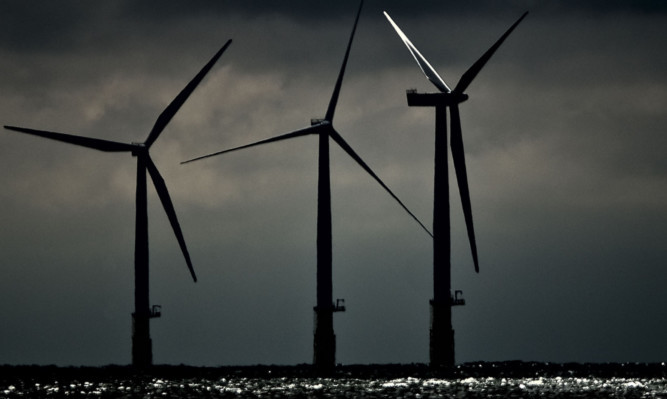The huge opportunities presented by granting of consent for major windfarms off the Fife and Angus coasts will be debated at Scottish Renewables’ Offshore Wind Conference next month.
The Scottish Government estimates the Neart Na Gaoithe, Inch Cape and Seagreen Alpha and Bravo projects could generate up to £1.2 billion for the Scots economy over their lifetime and support up to 13,600 jobs during construction.
Every commercial-scale offshore wind project in Scottish waters all of them are off the east coast now has planning consent.
Scottish Government approval of Neart na Gaoithe Inch Cape, Seagreen Alpha and Bravo in October followed its consent for the Bowl and Morl schemes in the Moray Firth in March.
The economic, social and environmental benefits of delivering these schemes are enormous, but the challenges are significant.
Lindsay Leask, senior project manager at Scottish Renewables, said: “Offshore wind developments are enormous infrastructure projects. The lead times for their investments amount to several years, and investors need a stable framework which provides certainty and clarity over the long term.
“The UK has long been one of the most highly-rated international markets for renewables.
“However, in recent years the uncertainty caused by electricity market reform (EMR) has pushed the country down the competitiveness league tables.
“Importantly, most of Scotland’s offshore wind projects still need to secure revenue support, either through the new Contract for Difference (CfD) mechanism established by the UK Government, or the more familiar Renewables Obligation.
“Bowl was fortunate to receive an investment contract, and recently secured a further boost when Copenhagen Investment Partners took on a 25% share of the project from SSE, leaving the power giant with 50% of the project and Repsol the remaining quarter.
“A pot of £235 million is available within the total levy control framework budget for ‘less mature’ technologies like offshore wind in the first allocation round of CfDs, which is significantly lower than the industry expected.
“This means a variety of different projects are now competing to secure this funding.”
These issues and more will be on the table at the Offshore Wind Conference in Aberdeen on January 27 and 28.
A weather monitoring mast for the Inch Cape windfarm has already been installed using port facilities in Dundee, and is visible from shore.
The mast will record wind conditions for two years before the first wind turbines are planned to be installed in late 2016 or early 2017.
The arrival of offshore wind projects in the north east also means the region has hosted some of the most rigorous environmental monitoring conducted in Scottish waters.
Lindsay Leask added: “The developers of these projects who are each investing hundreds of millions of pounds have to comply with strict rules around how the developments affect not only other users of the sea like fishermen, but the animals, plants and organisms that live in it.
“We now know more about what is happening beneath the waves off the east coast of Scotland than ever before.”
